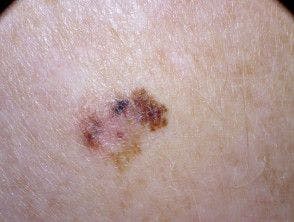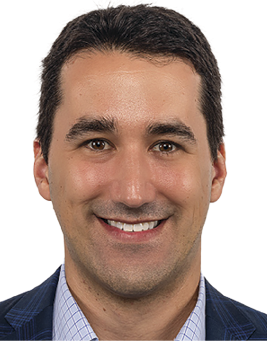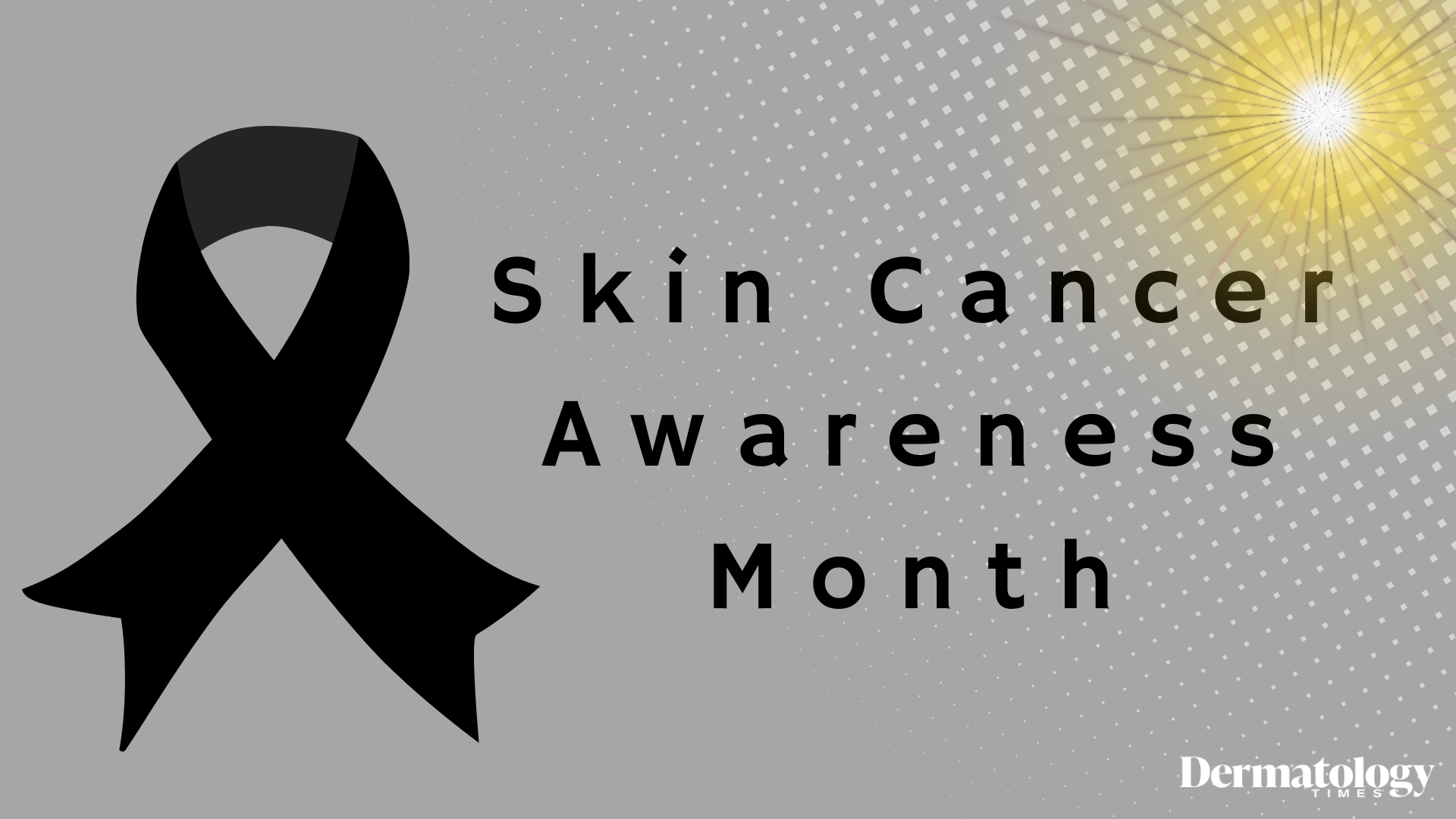
- Acne
- Actinic Keratosis
- Aesthetics
- Alopecia
- Atopic Dermatitis
- Buy-and-Bill
- COVID-19
- Case-Based Roundtable
- Chronic Hand Eczema
- Chronic Spontaneous Urticaria
- Drug Watch
- Eczema
- General Dermatology
- Hidradenitis Suppurativa
- Melasma
- NP and PA
- Pediatric Dermatology
- Pigmentary Disorders
- Practice Management
- Precision Medicine and Biologics
- Prurigo Nodularis
- Psoriasis
- Psoriatic Arthritis
- Rare Disease
- Rosacea
- Skin Cancer
- Vitiligo
- Wound Care
News
Article
Dermatology Times
The Road to Relief: Navigating a Personal Atopic Dermatitis Journey
Author(s):
Kristine Kucera, PA-C, MPAS, DHS, discusses the atopic dermatitis patient experience alongside one of her patients, Mickey Bryson.

In a Dermatology Times The Patient Perspective custom video series, From Diagnosis to Control: Understanding the Atopic Dermatitis Patient Journey, Kristine Kucera, PA-C, MPAS, DHS, a physician assistant at Bare Dermatology in Dallas, Texas, discussed the atopic dermatitis (AD) patient experience alongside one of her patients, Mickey Bryson.
Kucera and Bryson delved into the unique journeys of patients with AD, beginning with the first onset of symptoms, including diagnosis and treatment trials and tribulations, and achieving the ultimate goal of control.
First Onset and Quality of Life
Bryson first arrived at Kucera’s clinic in September 2016 with a rash that appeared to be a form of dermatitis with a significant amount of skin involvement. At the time, he had seen another clinician after the onset of red spots below the knees and ankles and was prescribed clobetasol ointment to counteract the intense itch, irritation, and erythema.
The clobetasol ointment led to minimal improvements, none of which were sustained. Itch, one of Bryson’s primary concerns, remained severe and became troublesome at night, when it became difficult to sleep.
“At that point, I knew something wasn’t right,” Bryson said. “It didn’t appear anywhere else on my body.... It wasn’t attacking the problem the way I wanted it to.”
Turning Off Inflammation
Prior to seeing Kucera, Bryson tried many over-the-counter or alternative lifestyle choices that were available to him. From applying Neosporin to switching laundry and soap products to hypoallergenic alternatives, Bryson tried to reconcile with the potential cause of the rashlike lesions, suspecting it could perhaps be a form of contact dermatitis.
“I knew when I saw you that we needed to do something systemic, not just something topical,” Kucera said. “Anytime we have any kind of skin eruption like this, whether it be atopic dermatitis or psoriasis or whatever else we come up with as our diagnosis, we know that there’s an inflammatory component that’s internal. My mind immediately goes to: We need to turn off the problem.”
Kucera prescribed Bryson steroidal treatment with a prednisone taper and a clobetasol cream as opposed to an ointment, and the two had in-depth discussions about Bryson’s desire to avoid long-term use of prednisone.
“We did talk about the potential side effects, and you definitely don’t want to do prednisone long term, but it is something that does give patients quick relief,” Kucera said. “It was to the point where it had to be done; something needed to be done differently.”
Pivoting and Reevaluating
Initially, the prednisone treatment plan proved effective in relieving itch. However, when Bryson returned to the clinic a few months later, the itching sensation had returned.
Collectively, Kucera and Bryson decided to move forward with a new treatment route via apremilast. While it did not exactly fit the approved bill for AD, Kucera opted to use it off-label, as she had seen it work previously in other patients with similar signs of rash and dermatitis, such as psoriasiform dermatitis. However, Bryson’s symptoms persisted even months later, and it became time to pivot yet again.
The next move was secukinumab with a heavy loading dose. Bryson transitioned to multiple injections within the span of 6 weeks.
“The more that it helped, or subsided the issue a little bit, then you kind of start thinking: What’s the long-term effect of this?” Bryson said. “I was not familiar with any long-term effects, and we talked about that, as well.”
After a few months of trial and error, secukinumab did not appear to be Bryson’s solution. Kucera again pivoted his treatment plan, switching this time to brodalumab.
“We’d kind of gone down the litany of medications that were available at that time, and it just didn’t seem to get us where we wanted to be,” Bryson recalled. “There’d be a little bit of relief for a week or two, and then it would come back with a vengeance, and it’d start all over again. You’d think: Is this ever going to go away? Is it ever going to get better? You almost resign yourself to the fact that it’s not, [and] you just have to live with it the best you can.”
Brodalumab led to about 80% skin clearance. After not achieving the desired 100% clearance, Kucera added a small amount of prednisone back into Bryson’s treatment plan.
Then came upadacitinib (Rinvoq; AbbVie). At the time, it was one of the few things Kucera and Bryson trialed that was FDA approved specifically for AD. Bryson’s symptom of itch subsided within 48 to 54 hours.
“As [long] as I keep the regimen going, there’s no itching at all,” Bryson said. His skin has remained clear since December 2023.
Patient-Provider Trust and Conclusions
Kucera thanked Bryson for his trust, noting that patient-provider trust is one of the most pivotal components of comprehensive care.
“As providers, we need to remember the relationship we have with our patients, and we have to be open, and we have to let them know that we’re here if [they] have any questions,” she said. “This is a long-term thing, and that’s one of the unfortunate things about a lot of inflammatory skin diseases. We don’t have a cure yet, and it is a control factor.”
In turn, Bryson thanked Kucera for her support over the past 8 years—from the start of his journey until clearance and relief.
“You educated me along the way, and we worked as a team. It worked out for the best,” he said. “We did what we could at the time, and now we’re to a point where we’ve got it under control and [are] ready to move forward.”
EP: 1.Creating a Connection: First Appointment Insights and Critical Inquiries Providers Should Make
EP: 2.Optimizing Long-Term Care: Physician Insights on Secondary Dermatitis Management
EP: 3.The Road to Relief: Navigating a Personal Atopic Dermatitis Journey
EP: 4.Navigating Treatment Challenges: Addressing Negative Responses and Determining the Next Course of Action
EP: 5.Empowering Patients: Understanding New Treatments and Long-Term Considerations with Fresh Approaches and FDA Endorsements
EP: 6.Quality of Life + Closing Thoughts
EP: 7.Navigating a Long-Term Journey: From Topicals to Systemic Therapies in AD
















Newsletter
Like what you’re reading? Subscribe to Dermatology Times for weekly updates on therapies, innovations, and real-world practice tips.










2 Commerce Drive
Cranbury, NJ 08512
All rights reserved.





